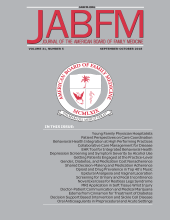Article Information
PubMed
Published By
Print ISSN
Online ISSN
History
- Received for publication August 31, 2015
- Revision received February 22, 2016
- Accepted for publication February 25, 2016
- Published online May 11, 2016.
Copyright & Usage
© Copyright 2016 by the American Board of Family Medicine.
Author Information
- Andrew D. Pinto, MD, CCFP, MSc,
- Gabriela Glattstein-Young, MD, MPH,
- Anthony Mohamed, MES,
- Gary Bloch, MD, CCFP,
- Fok-Han Leung, MD, CCFP and
- Richard H. Glazier, MD, CCFP, MPH
- From the Department of Family and Community Medicine, St. Michael's Hospital, Toronto, Ontario, Canada (ADP, GB, F-HL, RHG); the Department of Family and Community Medicine, Faculty of Medicine, University of Toronto, Toronto, Ontario, Canada (ADP, GB, F-HL, RHG); the Centre for Research on Inner City Health, Li Ka Shing Knowledge Institute, St. Michael's Hospital, Toronto, Canada (ADP, RHG); the Division of Clinical Public Health, Dalla Lana School of Public Health, University of Toronto, Toronto, Ontario, Canada (ADP, RHG); the Department of Family Practice, Faculty of Medicine, University of British Columbia, Vancouver, British Columbia, Canada (GG-Y); Inner City Health, St. Michael's Hospital, Toronto, Ontario, Canada (AM); and the Institute for Clinical Evaluative Sciences, Toronto, Ontario, Canada (RHG).
- Corresponding author: Andrew D. Pinto, MD, CCFP, Department of Family and Community Medicine, St. Michael's Hospital, 410 Sherbourne Street, 4th Floor, Toronto, Ontario, Canada M4X 1K2 (E-mail: andrew.pinto{at}utoronto.ca).






